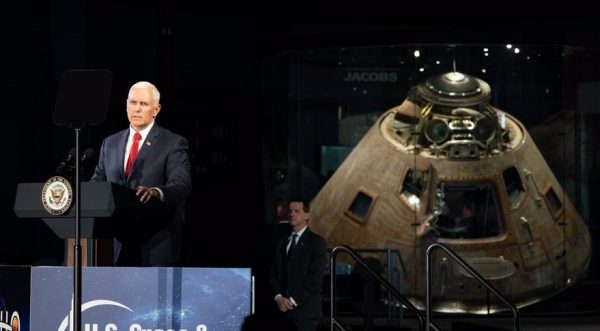Op-ed | The omnipresence of space – SpaceNews
by and —

While Vice President Mike Pence’s announcement that the United States will return humans to the moon by 2024 has drawn renewed attention to the country’s space program, the U.S. commercial and government space industry has remained extremely active over the last decade. Suborbital tourism, on both Virgin Galactic and Blue Origin vehicles, will likely be a reality by the end of this year. The return of American orbital human spaceflight capability will finally be realized as Boeing and SpaceX bring their crew capsules online. The largest rocket ever built, the Space Launch System, designed to take the Orion capsule to the moon, has made progress. Indeed, there are several new rockets of various sizes in design and development across the country. The breadth of engagement in space continues to increase as new companies are formed to take advantage of the flexibility and affordability of cubesats and smallsats to use space in new ways.
The trends in the United States reflect a growing global engagement in space as well. China has already placed a rover on the far side of the moon and intends to follow with humans. Both India and Israel have plans for robotic missions. An increasing number of countries are launching satellites, both large and small. This broader utilization of space has also elevated growing concerns about both space debris and managing space traffic. Clearly there is a lot going on!
The design and manufacture of space systems and the space operations community are concentrated in specific geographical locations, clearly reflected by those states represented on the various congressional committees that oversee the space sector. For those who do not regularly interact with the space sector or host part of the space ecosystem in their district or state, it might be easy to believe that this activity is not relevant to them or their constituents. This could not be further from the truth. Regardless of where anyone resides or works in the United States, the health and vitality of the U.S. space industry directly impacts daily life in critical ways. The most recognizable example is the importance and pervasive use of GPS. The Global Positioning System, a set of satellites providing geolocation and time information owned by the U.S. government and made available to civilians since the 1980s, is at the core of many everyday activities. Remove GPS from your smartphone and the “smart” is gone; most of the applications become useless. Any activity that requires knowledge of place or depends on precise time calculations uses GPS. It is the “ghost in the machine” and not possible without the satellite constellation orbiting Earth.
GPS is not the only benefit we derive from space assets. We rely on data from satellites to feed weather prediction models, monitor the health of our atmosphere and waterways, and even the chemical composition of soil. Telecommunications, television, and internet services are delivered from a variety of orbiting platforms, from large complex satellites to swarms of cubesats. Space is a resource we are reliant upon and still learning to utilize for the benefit of everyone on the planet.
The technologies created to get us to space and perform the myriad space missions also find their way into our households. NASA spin-offs can be found throughout everyday life, including light-emitting diodes, infrared ear thermometers, artificial limbs, artificial heart pumps, grooved highways and low-cost high-efficiency solar cells. The U.S. space industry touches every citizen. A healthy space program is in everyone’s interest.
This fall, the International Astronautical Congress, an annual gathering of the global space community, will be held at the Walter E. Washington Convention Center in Washington, D.C. Individuals and companies from more than 70 countries will attend for discussions and presentations on the status of their efforts on the advancement of the space ecosystem. Hosted by the American Institute of Aeronautics and Astronautics and with support from anchor sponsor Lockheed Martin, the congress provides a global snapshot of human engagement in space—from human spaceflight to new uses of cubesats, and from new technologies to cutting-edge science. What is taking place globally is relevant to all of us; we cannot take U.S. leadership for granted in the increasingly important domain of space. Mark your calendars for Oct. 21-25, and plan to stop by to experience how space affects you and the nation.
Sandy Magnus, a retired astronaut who flew on the final space shuttle mission, and Vincent Boles, the retired general manager of The Aerospace Corporation, are co-chairs of this year’s International Astronautical Congress.
Please enable JavaScript to view the comments powered by Disqus.






